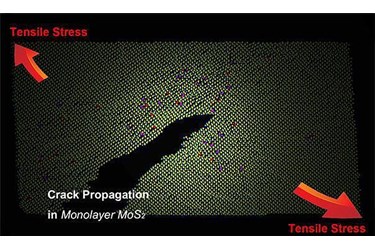The 2D material, molybdenum disulphide has shown that it develops cracks on an atomic level. The discovery was made by a team of scientists working at the Institute of Basic Science located in Korea. This study will contribute to improved application with respect to 2D materials in coming times. It will also play a huge role in photoelectric and electronic devices in coming times. Professor Lee Young Hee from the same team, adds, “The study shows that cracking in 2D materials is fundamentally different from cracking in 3D ductile and brittle materials. These results cannot be explained with the conventional material failure theory, and we suggest that a new theory is needed.”

The researchers are further researching into fractures that are capable of expanding in future and which one wouldn’t. Over a nano-level, atoms can move much more freely inside the ductile materials as compared to the brittle ones. By now, this theory, the Griffith model, has been included in lot many cracking phenomena, however, it lacks any kind of experimental data on a nano or atomic scale.
Under this study, IBS scientists closely observed how cracks progress in two-dimensional MoS2 when a pore was created in it. These atomic observations were made with the help of real-time transmission electron microscopy. Although MoS2 happens to be a brittle substance, the team observed that atoms dislocate at a distance of 3-5mm right from the tip of crack. The observation was explained with the help of Griffith model. For creating conditions that represent a natural environment, this sample was exposed to Ultra Violet lights. This helped MoS2 in oxidation. The atoms dislocations took place at a faster pace and the stretched region expanded from 5mm to 10mm from the tip of crack.
Filed Under: News


Questions related to this article?
👉Ask and discuss on Electro-Tech-Online.com and EDAboard.com forums.
Tell Us What You Think!!
You must be logged in to post a comment.